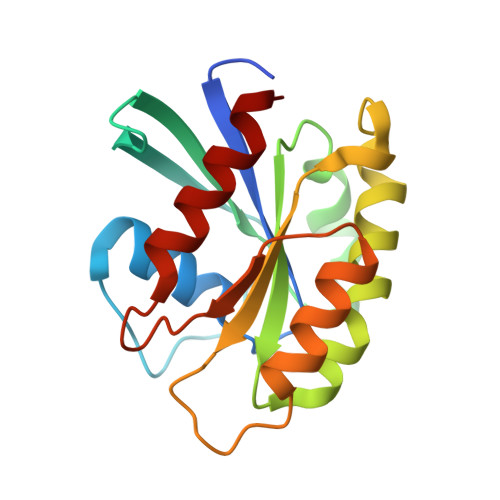Structural basis of family-wide Rab GTPase recognition by rabenosyn-5.
Eathiraj, S., Pan, X., Ritacco, C., Lambright, D.G.(2005) Nature 436: 415-419
- PubMed: 16034420
- DOI: https://doi.org/10.1038/nature03798
- Primary Citation of Related Structures:
1YU9, 1YVD, 1YZK, 1YZL, 1YZM, 1YZN, 1YZQ, 1YZT, 1YZU, 1Z06, 1Z07, 1Z08, 1Z0A, 1Z0D, 1Z0F, 1Z0I, 1Z0J, 1Z0K, 1Z22, 1Z2A - PubMed Abstract:
Rab GTPases regulate all stages of membrane trafficking, including vesicle budding, cargo sorting, transport, tethering and fusion. In the inactive (GDP-bound) conformation, accessory factors facilitate the targeting of Rab GTPases to intracellular compartments. After nucleotide exchange to the active (GTP-bound) conformation, Rab GTPases interact with functionally diverse effectors including lipid kinases, motor proteins and tethering complexes. How effectors distinguish between homologous Rab GTPases represents an unresolved problem with respect to the specificity of vesicular trafficking. Using a structural proteomic approach, we have determined the specificity and structural basis underlying the interaction of the multivalent effector rabenosyn-5 with the Rab family. The results demonstrate that even the structurally similar effector domains in rabenosyn-5 can achieve highly selective recognition of distinct subsets of Rab GTPases exclusively through interactions with the switch and interswitch regions. The observed specificity is determined at a family-wide level by structural diversity in the active conformation, which governs the spatial disposition of critical conserved recognition determinants, and by a small number of both positive and negative sequence determinants that allow further discrimination between Rab GTPases with similar switch conformations.
Organizational Affiliation:
Program in Molecular Medicine, Department of Biochemistry & Molecular Pharmacology, University of Massachusetts Medical School, Worcester, Massachusetts 01605, USA.
















